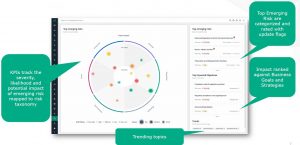You didn’t see it coming
Imagine your hospital had just encountered its first case of wrong-site surgery. As the Quality and Patient Safety Manager, you were utterly shocked and in disbelief. How could this have happened? After all, Surgical Safety manuals and checklists are in place, and you just had a “Safe Surgery Saves Lives” campaign for Safety Week recently. You looked back at all the incident reports, searching for wrong-site surgery incidents but could not find any. Crucially, there are no near miss reports that give you warning signs that such an adverse event could happen in your hospital. “This must a freak incident”, you said to yourself.
Your thoughts shifted to incident reporting practices in your hospital. Your department receives many incident reports – clinical, non-clinical and workplace incidents – but very few near miss reports. Awareness on reporting near miss incidences or unsafe conditions has been low. “Why report when the error is corrected in time and the patient is not harmed?”. In hindsight, had near miss reporting been encouraged, you might have seen some warning signs and taken mitigating actions.
The above is a hypothetical scenario to highlight the importance of near miss reporting. It is part of proactive safety and risk management and is crucial in preventing adverse events. Data from near miss reports will enable you to identify potential risks and system weaknesses, and step-up safety measures.
Don’t leave it to chance
The following are some examples of near miss reports that would have raised red flags in the above scenario:
- Discrepancy between the scheduled procedure and the consent form.
- Wrong patient entering the operating room.
- Patients at the operating room without proper identification.
- Site markings are ambiguous or unclear.
- Site markings being done without the involvement of a patient or surgeon.
- Not all team members were present during time outs.
How many such near misses might have occurred but go unreported?
What is a near miss?
WHO defines a near miss as “an error that has the potential to cause an adverse event (patient harm) but fails to do so because of chance of or because it is intercepted”.
The National Health Service (NHS) defines near miss as any patient safety incident that had the potential to cause harm but was prevented. A near miss incident should be distinguished from a “no harm” incident, where an incident happened, but no harm resulted (for example, out of date medicine administered, but the patient suffered no ill effects).
ISO 45001 (Occupational Health & Safety) says an incident where no injury and ill health occurs, but has the potential to do so, can be referred to as a “near-miss”, “near-hit” or “close call”.
Near misses are not limited to clinical incidents. In healthcare settings, they include non-clinical incidents, workplace safety and health related incidents, and IT and data breach incidents.
The importance of near miss reporting
Just like incident reporting, near miss reporting plays a crucial role in patient safety management system. Studies conducted on patient safety have shown that the root causes of near misses and adverse events are similar. However, near misses are around 10 to 100 times more frequent than actual incidents. The large database on near misses provides valuation information for analysis to prevent incidents from occurring.
The importance of near miss reporting are as follows:
Identifying potential risks and hazards. Near miss reporting provides you with a large database for analysis to identify potential risks and hazards in the workplace. Near misses could be the warning signs of latent system failures that otherwise go unnoticed. Root cause analysis on near misses can tell you whether the existing safety measures in place are effective, or further preventive or early detection mechanisms are required.
Building a culture of safety. Near miss reporting can help to create a culture of safety, where patient safety is the top priority. It promotes transparency and encourages health workers to be more aware of safety concerns, and report near misses and other incidents without fear of reprisal.
Learning from errors. Near miss reporting provides opportunities for learning and continuous improvement. These learnings can lead to new safety practices and sharing of skills and knowledge among health workers.
Mitigating financial, reputational, and legal risks. Moreover, by demonstrating a proactive approach to patient safety, management can mitigate the risk of financial and reputational losses resulting from adverse events, as well as the risk of legal liabilities.
Barriers to near miss reporting
There are various barriers to reporting near-miss events in healthcare. Chief of which is safety culture and awareness. Many people including health workers are still having the perception that if an incident does not reach the patient or cause any harm, it is not necessary to report. They are not fully aware of the importance of near miss reporting. Fear of punitive actions and blame culture are major hindrance. Heavy workload and time constraints, fear of litigations, poor feedback loop, and manual and ineffective reporting systems, are some of the common barriers.
How is your organisation doing in near miss reporting? A useful indicator is the number of near misses reported as a percentage of the total number of incidents reported. If the percentage is less than 10% or 20%, then you may want to conduct an internal survey to find out why people are hesitant to report near misses.
Strategies to encourage near miss reporting
Here are some strategies that you can implement to encourage near miss reporting.
Establish a culture of safety: Creating a culture of safety is essential to encourage reporting of near misses, regardless of severity or outcome of the incidences. Promote open communication, transparency, non-punitive reporting policies and a no blame culture. Break the psychological safety barrier and make people feel comfortable to report near misses.
Provide training and raise awareness: Emphasize the importance of near miss reporting, how it can prevent adverse events, how to identify near misses, and how to report them can help promote reporting. Healthcare workers should also learn how to intervene or respond in situations where errors are detected before reaching patients.
Recognise and reward near miss reporting: Rewarding staff for reporting near misses is an effective way to encourage reporting. It sends a strong message on management commitment to improve patient safety. Organise safety campaigns on near miss reporting and share success stories.
Implement a web-based reporting system: Use simple forms. Make it quick and easy for staff to report near misses. The system should be user-friendly, easily accessible, and confidential. Provide an anonymous reporting feature so that more people will step forward. Use the reporting system for data and trend analysis, generating actionable insights, and tracking corrective actions.
Provide feedback: Providing feedback to staff who reported the near misses can help encourage greater participation. Seeing their efforts appreciated and led to a positive impact on patient safety is a great motivation. Showcase the achievements through internal newsletters and website, etc. A web-based solution can facilitate communication and collaboration.
Engage patients and their families: Encourage patients and their families to report near misses and potential safety concerns. Patient engagement plays a crucial role in patient safety. Patients and families can provide unique insights and perspective, and personal experience.
In summary
Near miss reporting is crucial to improving patient safety and preventing harm. It helps in early detection of potential risks and hazards, improves safety culture and awareness, and promotes transparency and learning. Healthcare organisations should encourage and promote a culture of near miss reporting among staff, patients, and their families. Establishing a web-based system for reporting, analysing, and monitoring near miss incidences and corrective actions will be a great step forward.






